How to Prevent Ingrown Hairs on Back of Neck
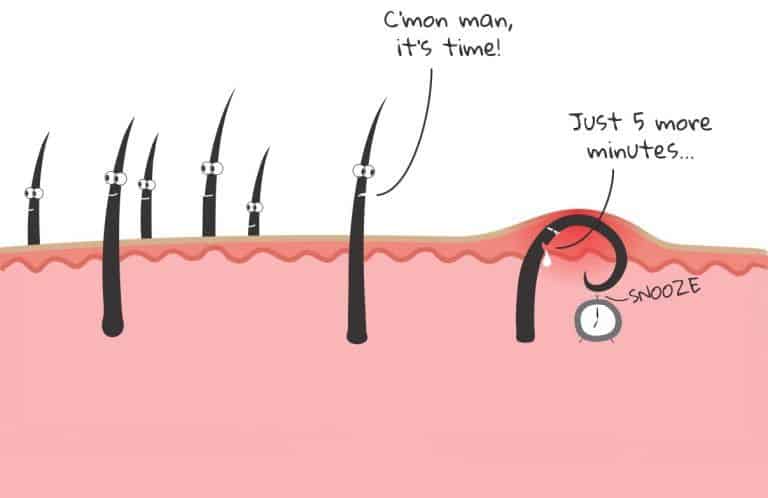
Get The Beard You've Always Wanted

PREMIUM BEARD OIL – PINE
Boost beard growth. Eliminate beardruff. Stop beard itch.
- 100% pure natural Ingredients
- Eliminates beard itch and dandruff
- Increase in beard hair growth over time
Lately, you have been noticing some strange bumps on your face that don't look like pimples or hives, chances are pretty good they could be ingrown facial hairs.
These painful, itchy, and red bumps occur when sharp edges of the facial hairs curl around and simply start growing back into the skin after they have been removed with tweezers, waxing, or shaving.
In some instances, a clogged hair follicle could cause the hair to grow sideways rather than upward, resulting in a bad hair growth pattern when that sharpened end of the hair penetrating and growing under the skin.
Today we are going to discuss the causes, prevention, and the removal of ingrown facial hairs.
Table Of Contents
- The First Signs of an Ingrown Facial Hair
- Can Ingrown Facial Hairs Cause Acne
- Ingrown Facial Hair Cyst
- The Causes of Ingrown Facial Hairs
- 1. Dead Skin Cells
- 2. Shaving too closely
- 3. Pulling the skin
- Prevention of Ingrown Facial Hairs
- Taking Care of Your Skin
- Applying Beard Oil
- Preventing Ingrown Facial Hairs Caused by Waxing or Plucking
- Tips for Removing an Ingrown Hair
- 1. Removal with Sharp Device
- 2. Removing Ingrown Facial Hair Naturally at Home
- 3. Using a Warm Compress
- 4. Exfoliating the Skin
- 5. Getting Antibiotics
- 6. Laser Hair Removal
The First Signs of an Ingrown Facial Hair
One of the first things you're going to notice when an ingrown hair on your face occurs is itching. Soon after that, the surrounding skin will become red and swollen.
Inside the bumps, you will notice a pustule or papule with a hair in the center. The severity of the symptoms may vary depending on your genetics, overall health, and lifestyle.
The other things that will determine the symptoms of ingrown hairs are the way facial hair grows into the skin, the presence of an infection, and how deep that infection is.

When it comes to infected ingrown hairs on the face, they usually affect only the surrounding skin. However, sometimes the infection spreads and evolves into an infected hair follicle.
There are two groups of ingrown hairs – those caused by, already mentioned, infected follicles, and the ones caused by a secondary skin infection.
It is possible that you don't suffer from any kind of infection, and the pustule on your skin is only the product of your immune system as a response to an invader. In this case, the invader is your own hair.
Doctors often think that ingrown hair is the result of skin infection and prescribe antibiotics when there is no need for them.
Everyone can experience ingrown facial hairs from time to time, but if that condition becomes chronical, it's important to find the real source of a problem and not treat the symptoms.
Do the opposite, and chances are high that you will be left with ingrown facial hairs and their symptoms permanently.
A chronic case of ingrown hairs sometimes indicates that you are suffering from pseudofolliculitis barbae, also known as "true" folliculitis.
Can Ingrown Facial Hairs Cause Acne
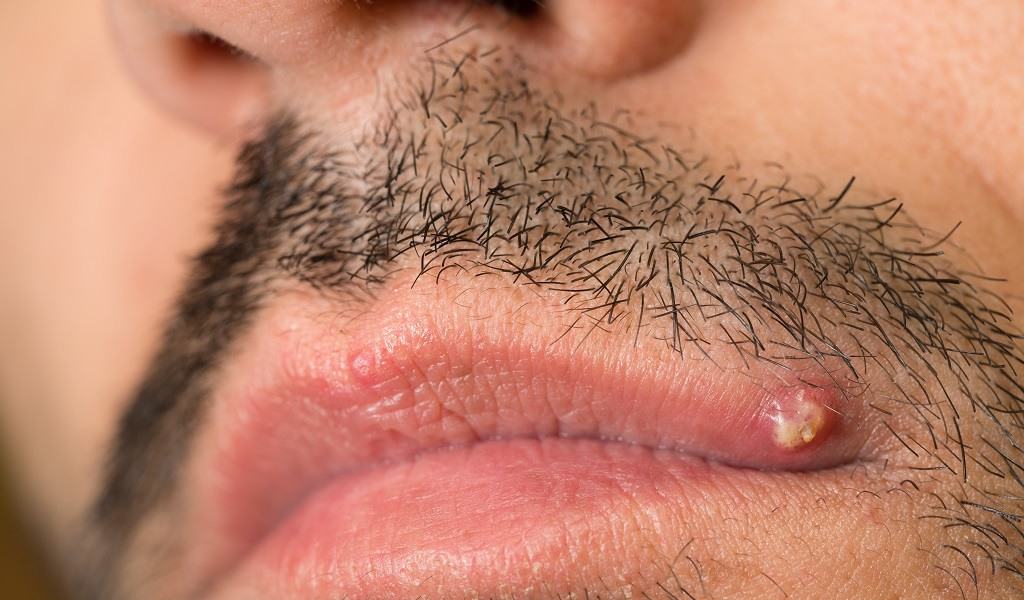
Ingrown hairs can easily be mistaken for acne. After all, not only the symptoms are similar, but they also look alike.
Even the dermatologists can find it hard to make a difference between symptoms of ingrown hair and acne.
That's when they will submit you to a skin culture test. This test tells if you suffer from an infection, either bacterial or fungal.
This being said, many men who think that they have acne, actually have a problem with ingrown hairs on their face.
Identifying which of these two problems you are dealing with is important, because the ways you should treat them are different.
Both, acne and ingrown hair develop in hair follicles. However, acne is formed from dead skin and oil buildups that cause pore blockage.
When the pore grows bigger, the material inside of it spills into the surrounding skin. The skin then becomes red, irritated and swollen.
An ingrown hair, on the other hand, doesn't form a pore blockage on your face skin. Instead, what happens is that the hair grows back into the skin by piercing the follicle wall and disrupting the normal hair growth process.
Your body will see your own hair as an invader and cause redness, pustule, and swelling. The end result is a bump that looks precisely like acne, but it's not the same.
Ingrown Facial Hair Cyst
After the infection, ingrown hair can turn into an ingrown hair cyst. This cyst is an abnormal epithelium-lined sac that forms in the hair follicle.
This cyst can be filled with either semi-solid substance or a liquid. Most of them are harmless and will disappear after some time.
However, if an ingrown hair cyst becomes too painful and irritates the skin on your face, you should seek medical attention.
For those cysts that aren't painful, it will be enough to wash the face with mild soap and warm water. The one thing that you should never do is trying to pop or squeeze an ingrown facial hair cyst.
The Causes of Ingrown Facial Hairs
Although anyone can get ingrown hairs, the problem tends to be worse for people who have very coarse and curly facial hair.
As the facial hair grows, it tends to bend back instead of continuing outward and upward.
If this happens you can straighten your beard naturally by establishing a morning routine that includes a quality beard brush like Beardoholic Boar Hairs Brush, a hair dryer like Revlon 1875W Quick Dry Hair Dryer, a premium beard balm like Beardoholic Beard Balm.
Once it bends back, the sharp edge of the facial hair simply pierces the skin and continues growing under it.
This is especially common after the hair has been shaved because the edge of the hair is now razor sharp.
Razor bumps usually develop on men's chin and neck, while women typically get razor bumps on the armpits and legs.
Ingrown facial hairs can't be treated the right way if you don't know what caused them in the first place.
Three of the most common reasons why ingrown facial hairs occur are:
1. Dead Skin Cells
Removing dead skin and oil buildups can prevent ingrown hairs on your face. When this is not done often enough, they stay on your skin, preventing new hairs from growing out.
Those new hairs have to grow somewhere, and when they can't grow up, they go backward or sideways and cause ingrown hairs.
2. Shaving too closely
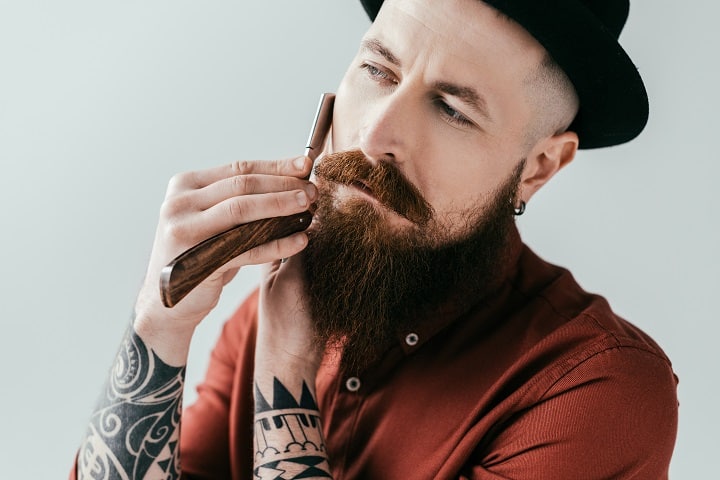
It is already known that razors tend to pull and tug the skin to give you a close shave. Cutting hairs really close to the skin surface with a razor blade can cause their edges to get caught in the skin, preventing them from growing out and causing razor bumps.
The result is an ingrown facial hair.
3. Pulling the skin
Again, this has a lot to do with the previous cause. While shaving, a lot of men tend to pull or stretch the skin to get a closer shave. When released, the hair can get caught below the skin and cause ingrown hair.
Besides all of these causes, ingrown facial hairs can also be the result of bacterial or fungal infection, chemicals that irritate skin, pore-clogging skincare products, dirt, makeup, and grease.
The skin that lacks moisture is more prone to developing ingrown hairs because it can weaken the skin's natural healing and defense mechanism.
On the long run, this increases blood flow, and your body releases chemicals in the area with ingrown hair. As a consequence, surrounding hairs can start growing abnormally.
Every man who tried catching ingrown hairs with tweezers knows how frustrating it can be to pull it when there are multiple thin or thick hairs formed as one.
People who tend to have higher levels of sex hormones usually have excessive hair growth, and they see these painful bumps on the skin after shaving more frequently.
Related Article: 4 Steps to Increase Testosterone and Beard Growth
Latinos and African-Americans also see more razor bumps, or pseudofolliculitis, due to the fact they tend to have thicker and curlier hair.
The ingrown facial hairs can be caused by waxing, shaving, or plucking the hairs.
Good To Know: 5 Tips on How to Grow a Thicker Beard
Prevention of Ingrown Facial Hairs
Although any sharp facial hair can make that quick turn and begin to grow under the skin, there are many things that you can do to prevent ingrown hairs from happening in the future.
By taking a proactive stance against ingrown hairs on your face, you will prevent ingrown hairs and reducing those painful red bumps from appearing all around your face and neck.
The following steps to prevent ingrown hair are simple to implement and will go a long way in keeping your face clear.
- Be sure that each time you shave you are using a single-blade sharp razor. (we recommend Professional Straight Edge Razor by Utopia Care)
- Make certain that you are shaving each time in the direction that the facial hair is growing.
- After you are done shaving, apply a cool and clean washcloth to the skin to reduce any irritation.
- Before you shave, wet your skin with warm water and always use a lubricating gel or cream.
- Try to use as little strokes as possible when shaving to lessen the chances of hairs growing back into the skin.
- When shaving with an electric razor, hold it slightly above the skin.
- Make certain that you are rinsing off the razor blade after every stroke.
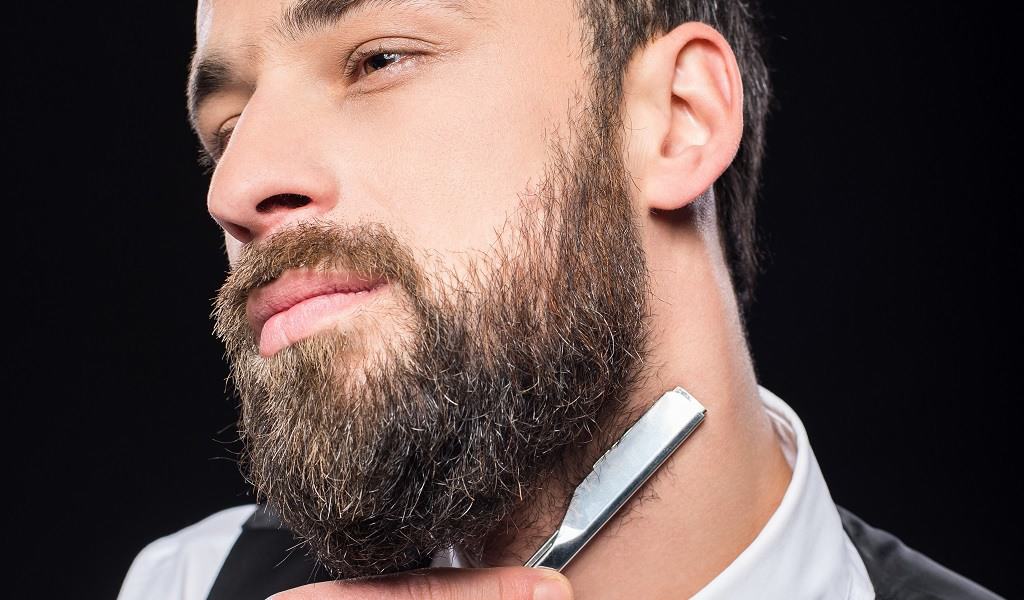
Another, low maintenance solution to prevent ingrown facial hairs is to simply stop shaving entirely.
After all, beards are amazing, and there are plenty of different beard types and styles you can choose from.
If you stop shaving for a while, you will soon notice a reduced amount of ingrown hairs because you will let them grow naturally.
Although bad shaving techniques are what usually triggers ingrown hairs on the face, razor bumps, and razor burns, they are not the only ones.
So, improving them won't prevent ingrown hairs if you don't take other preventive measures.
Here are all the methods that can help prevent ingrown facial hairs from showing up:
Taking Care of Your Skin
Ingrown hairs are more likely to show on the dirty and oily skin. That's why you need to wash, exfoliate and moisturize your face on a regular basis.
By washing your face with a mild cleanser and warm water every day, you will remove dead cell build-ups, pore-clogging and, in the bottom line, ingrown facial hairs.
Our pick: Dr. Squatch Pine Tar Soap
The right way to do this is by making circular moves all over your face for 30 seconds. This technique dislodges and helps prevent ingrown hairs and cleans the skin on your face from all dead cells thoroughly.
Exfoliation is the next step when it comes to taking care of your skin to prevent ingrown hairs on your face.
Every night you should rub the neck and face in circular motions with an exfoliating scrub or wet washcloth to tease out those ingrown hairs, but avoid the sensitive region below your eyes.
How often will you do it, depends on the type of your skin. An optimal number of times would be three times per week. Anything more than that will dry out the skin, causing new problems.
Finally, you should moisturize your face. When you exfoliate your skin, it can become dry or irritated. That's why you need to hydrate it.
An excellent facial hair moisturizer will smoothen the skin on your face and encourage your facial hairs to grow in the right direction. Smoother skin will be less likely to develop ingrown hairs.
Our choice for moisturizer: Honest Amish Beard Balm Leave-In Conditioner
Take a good look at the skincare products you are currently using. You will probably find at least one of them that contains alcohol.
Alcohol can irritate and dry your skin, by stripping it off its natural oils that protect and keep your skin moisturized and flexible.
Dry skin is more prone to different problems, and one of them are ingrown facial hairs.
Applying Beard Oil
When noticing ingrown facial hair, most men hurry to remove it with some tweezers, as that seems like the best solution.
However, this hair removal attempt often falls flat, and can even cause skin infection or irritation. Even if you succeed, ingrown hairs will return.
To prevent ingrown hairs from appearing again after tweezing, you will find beard oil to be beneficial.
Beard oil works by opening up the pores and making all the bacteria and pus disappear from your skin.
Quality beard oils are also made with antiseptics, such as tea tree oil, that eliminate facial hair itching, burning or infection you may be feeling.
For the best results, we recommend using the Beardoholic Natural Beard Oil that has proven to work in reducing infections and burning, while also getting rid of itching at the core.
The redness and pain caused by an ingrown hair usually stop by the next day, and after three days, you won't be able to tell where the ingrown hair once was.
Preventing Ingrown Facial Hairs Caused by Waxing or Plucking
The technique to prevent ingrown facial hair when waxing or plucking is similar to the one when shaving.
You should start the process by preparing your skin before waxing or plucking it. Warm, wet dishcloth pressed on your face for a couple of minutes will open up the pores which will prevent ingrown hairs later.
Remember to relax your facial muscles when you start with hair removal. If you don't do it, individual hairs may stay and form one or more ingrown facial hairs.
After getting rid of undesired hairs by waxing or plucking, use Lather & Wood Shaving Co. After-Shave or cold water to soothe and repair the skin.
Moisturizers and creams should be applied only after two to three hours. If you put them on your face sooner, it will cause pore clogging.
It might be difficult at first to incorporate all of these methods to prevent ingrown hairs, so try one at a time and watch closely to see if those little red bumps begin to disappear.
Once you develop a shaving routine that results in the least amount of those ingrown hairs from returning, stick with it and then focus on a few of the others that we have mentioned here.
Before you know it, that area will be smooth and free of those little-ingrown hairs.
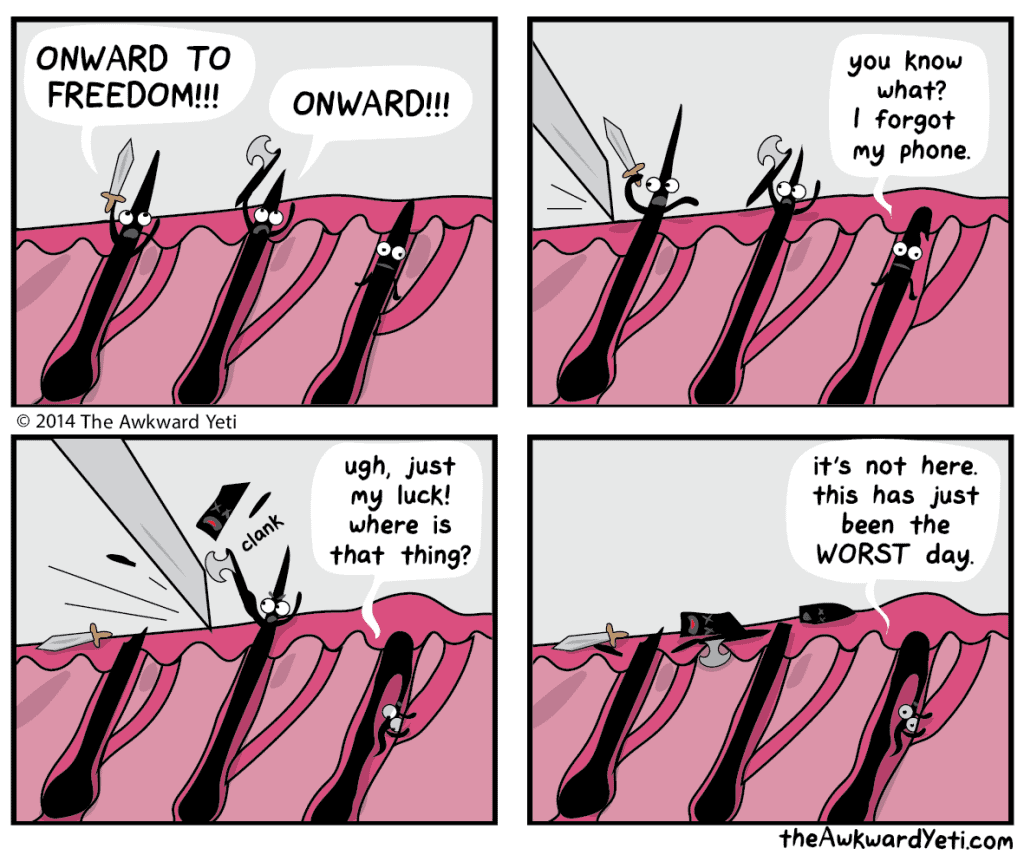
Tips for Removing an Ingrown Hair
Chances are pretty good that you are going to develop one or more ingrown facial hairs in your life, so it is important you learn how to remove them before the red bump gets too big and painful.
If you shave on a regular basis, then you are more likely to be dealing with ingrown hairs, and these hair removal tips will certainly help to keep them from coming back shortly.
If you start implementing some of the tips to prevent ingrown hairs we discussed earlier, you will be working to remove those stubborn little hairs less frequently.
1. Removal with Sharp Device
One of the most common ways to remove a single ingrown hair is to use a sharp device like tweezers (check out Tweezers for Ingrown Hairs by Majestic Bombay) or a sterile needle (check out BodyJ4You Piercing Needles).
It might take a time to coax that curly facial hair closer to the surface, just avoid digging into the skin for it.
Chances are good a loop of the hair is very close to the skin surface, so if you can get the needle or tweezers tips in that loop, you can snag it and pull it out more easily.
If you try to dig out an ingrown hair with tweezers and needle, you are risking infection or scarring.
Scars from ingrown hairs form mainly when you use a needle, pin or any other sharp object and pierce the skin to dig out the ingrown hair.
The best way to avoid getting scars from ingrown facial hair is by leaving it to heal naturally.
In the meantime, avoid shaving, waxing and plucking the hairs from that area until the ingrown hair disappears completely.
2. Removing Ingrown Facial Hair Naturally at Home
As in most cases when you have skin problems, the best way to deal with them is natural. After all, making your own home remedies to remove and prevent ingrown hairs is the safest and healthiest way.
For example, when exfoliating your skin, you don't have to buy the exfoliation cleanser. Instead, you can make an exfoliant at home with baking soda, sea salt, sugar and olive oil. It's as simple as that.
Honey can be a great moisturizer. It's particularly effective if you are coping with an infection because it acts as an antibacterial.
Just a small amount of honey onto an ingrown hair, applied twice a day, will loosen the skin and draw out the free end of a captured hair.
Keep in mind that the honey should stay on your skin 20 to 30 minutes or until it gets dry. Tea tree oil and aloe vera are also known as natural remedies that have antibacterial, antiseptic and anti-inflammatory properties.
These properties heal the skin and relive it from irritation and itching while removing ingrown hairs altogether.
Tea tree oil should be diluted with some water before you apply it on the skin. Aloe vera is the most effective when you use it right after shaving and leave it for some minutes. After that, you should rinse it off with mild soap and warm water for 100% success in hair removal.
3. Using a Warm Compress
Place a warm compress over the area where you have the ingrown hair. The heat of the compress will soften the skin and help to bring that hair closer to the surface.
In many cases, the heat alone will be enough to get the edge of the hair to come back to the surface where you can grab it with tweezers.
If the facial hair is embedded too deep, simply run that compress under hot water again and hold on the skin surface. Eventually, that wild hair will be easier to pull from the skin.
Good To Know: Simple Techniques on How to Soften a Beard
4. Exfoliating the Skin
A simple way to nudge that ingrown hair to the surface is to exfoliate the skin.
Two times a day, use an exfoliating brush and scrub on the face to remove dead skin cells, oils, and dirt, that could be trapping the hair under the surface.
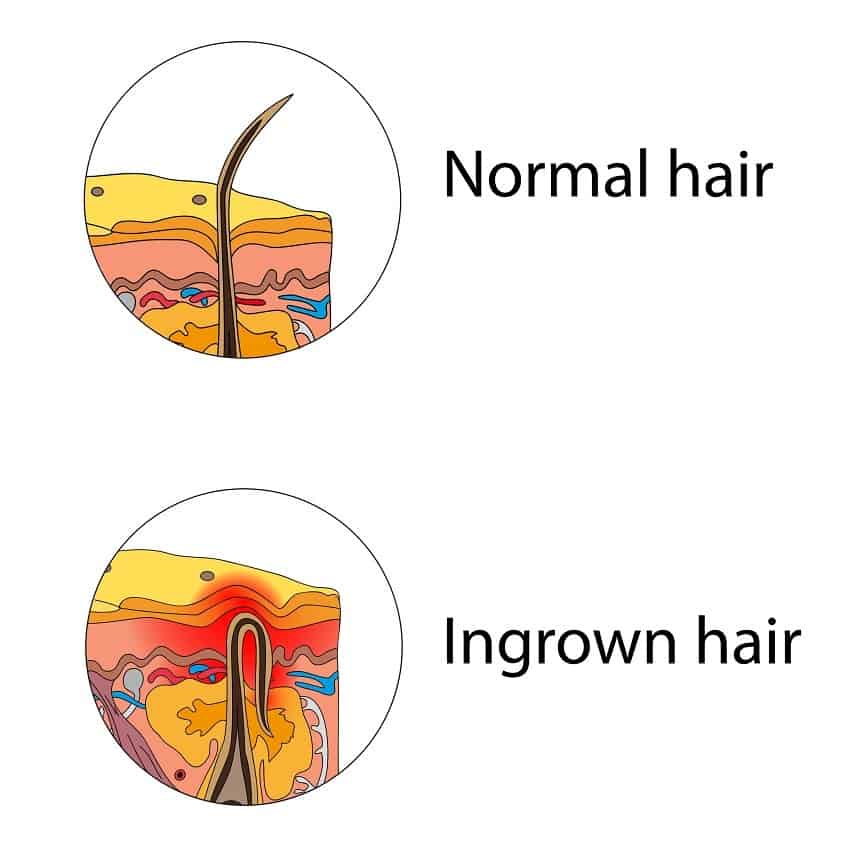
This process will loosen the hair from under the skin surface and make it easier for you to grab with your sharp tweezers or sterile needle.
The best time to exfoliate the skin is at night when you are not under pressure to rush out the door.
5. Getting Antibiotics
For most ingrown facial hairs, there won't be a need to visit a doctor.
However, if an ingrown hair gets infected, red, swollen and causes you discomfort for more than four days, you may need to see a dermatologist to get some antibiotics.
6. Laser Hair Removal
The last resort to get rid of an ingrown hair on your face is laser hair removal. This treatment may be a solution if you suffer from chronic ingrown hairs.
The treatment is quick and removes any ingrown hairs permanently, but the downside is that it can be a bit costly.
Furthermore, it can cause scars or blisters, be quite painful and require multiple treatments. Your dermatologist will warn you about these possibilities before proceeding with the treatment.
So now you know all about what causes ingrown facial hairs, how to prevent ingrown hairs from growing in the first place, and what steps you can take to remove them from being trapped under the skin.
By taking better care of your skin and shaving with a sharp razor, you can reduce the likelihood of those little red bumps from developing in the first place.
Article To Help You Choose Products For Beard Care: Top 5 Most Used Beard Care Products [Explained]
Do you have any new or better way to remove or prevent ingrown hairs? Share your thoughts and experiences with us in the comments bellow.,
Photo from: Pigtelligent.com, Maryna Melnyk © 123RF.com, Saaaaa / depositphotos.com, Y-Boychenko / depositphotos.com and [email protected] / depositphotos.com.
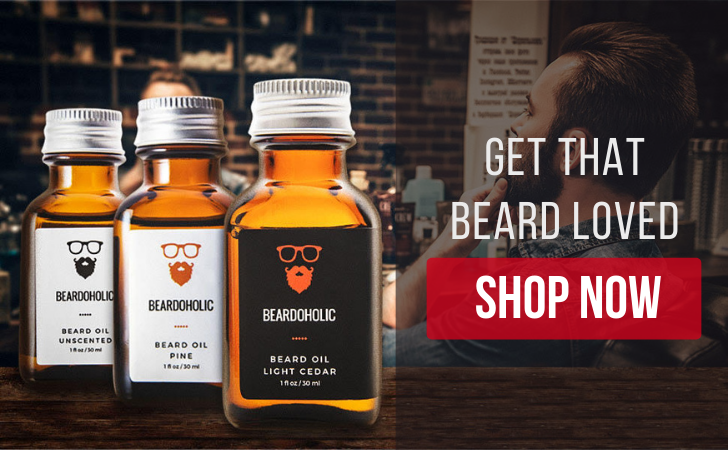
How to Prevent Ingrown Hairs on Back of Neck
Source: https://beardoholic.com/ingrown-facial-hair/
0 Response to "How to Prevent Ingrown Hairs on Back of Neck"
Post a Comment